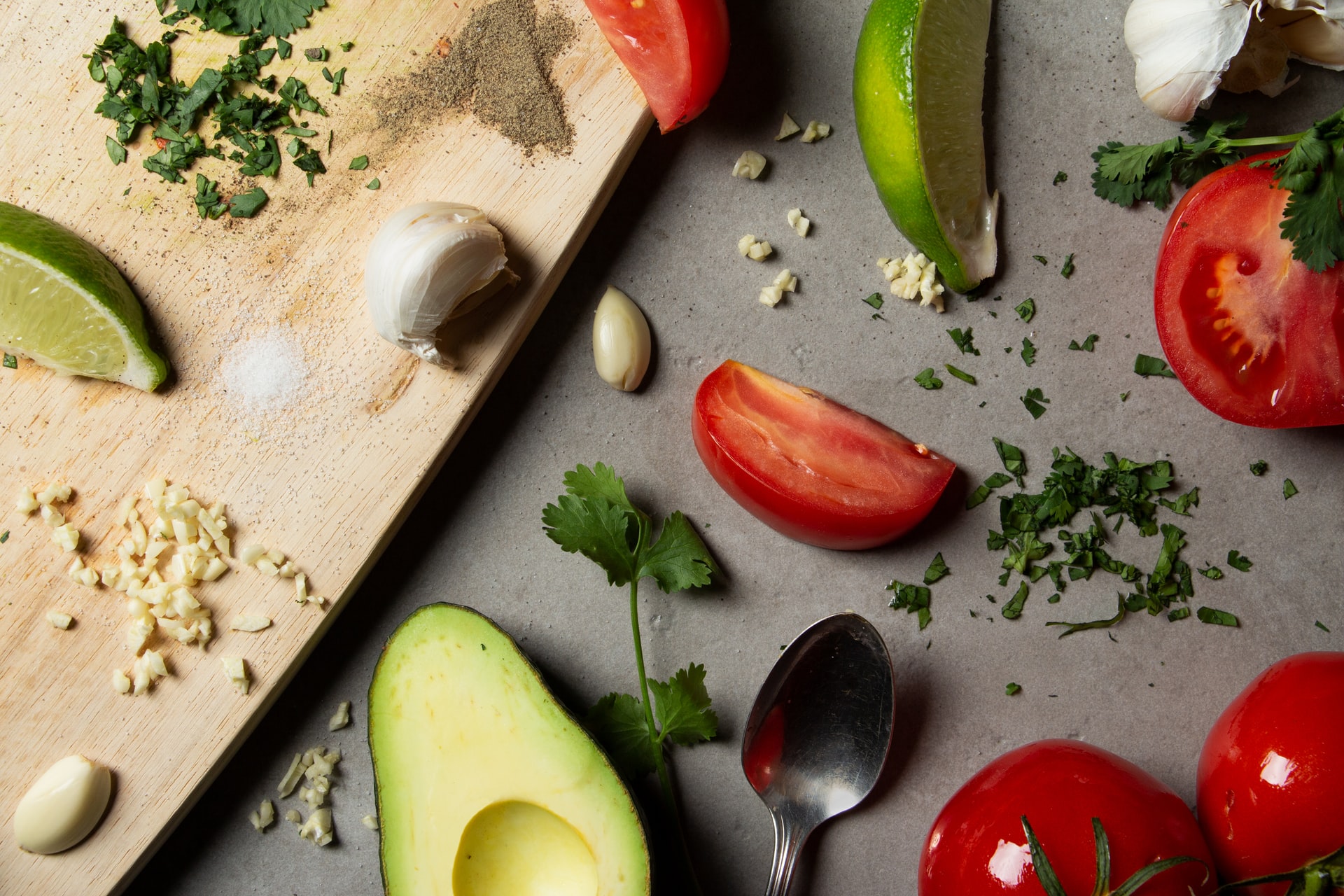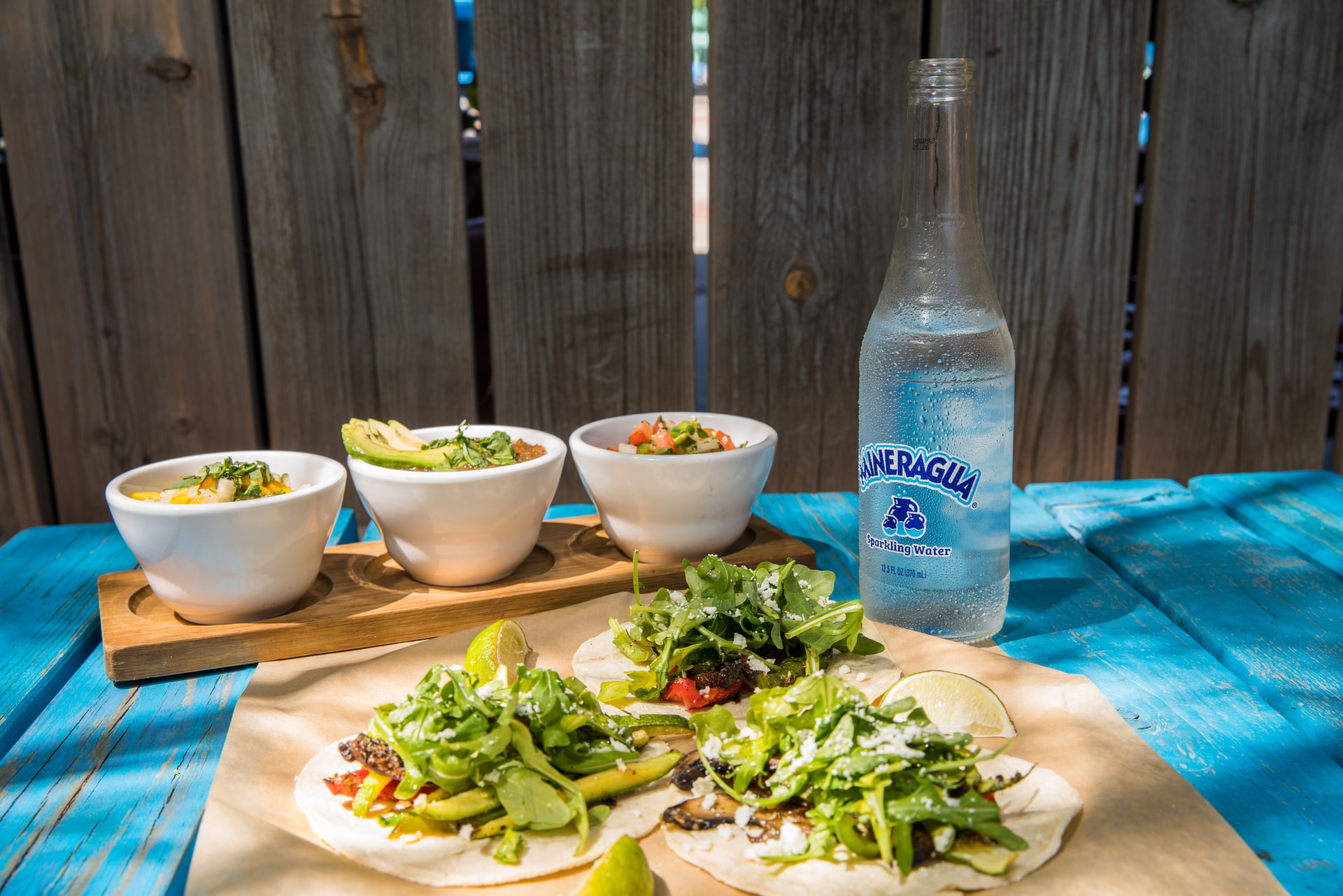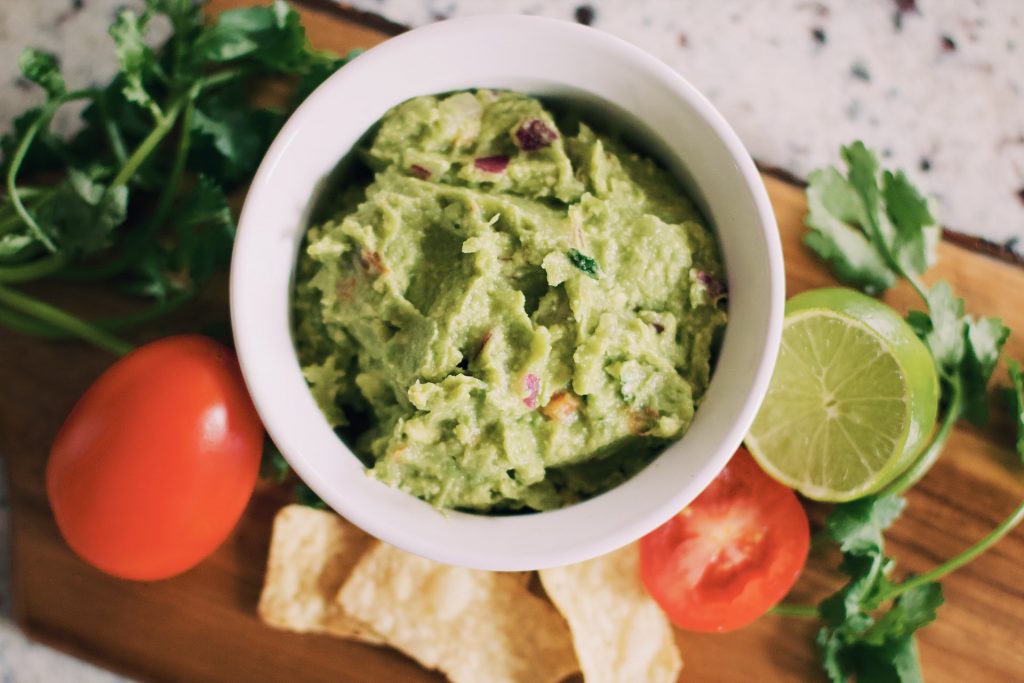In the world of snacks and condiments, guacamole is a crowd favorite. The yummy green goop is the go-to condiment, dip and snack at Cinco De Mayo celebrations, casual family gatherings, game days or me-time breaks. Even if you’re on a diet or a dedicated vegan, it doesn’t matter. Guac is here to save your foodie day!
But before you indulge in all things guac, guacamole nutrition deserves your attention. Creamy guacamole may be low in saturated fat and a good source of essential nutrients but is guacamole healthy? Is there such a thing as “too much guacamole?”
Is Guacamole Healthy? The Truth About Guacamole Nutrition
A better understanding of guac’s source will give you better insight into its nutrition. So what’s in guacamole?
The primary ingredient of guacamole is pureed avocado. Avocados are dubbed as “superfoods” because of their high fiber, vitamin and monosaturated fat (healthy fat) content. A study from the Critical Reviews in Food Science and Nutrition revealed that avocados contain large amounts of magnesium and potassium, as well as high levels of vitamin B, vitamin E, vitamin K and folate (which supports brain health). These fruits also have 10 grams of fiber and are naturally free from cholesterol, sodium and trans-fat.

Avocados are also rich in phytochemicals, which are compounds found in plants (vegetables, fruits, nuts, whole grains, legumes and seeds) that give plants their flavor, color and aroma.
Apart from their roles in plants, these phytochemicals have promising benefits as listed below by Harvard Health Publishing:
- Flavonoids, found in apples, berries, onions, citrus, coffee and soybeans, may fight tumor growth and inflammation.
- Carotenoids, which are found in yellow, orange and green plants (e.g. squash, carrots, broccoli and tomatoes) boosts immunity and may inhibit cancer growth and cardiovascular disease.
- Thiols and sulfides present in leeks, garlic, onions, scallions and olives may decrease your levels of bad cholesterol.
- Anthocyanins in berries may lower blood pressure.
As mentioned, avocado is also rich in monosaturated fats, which are good fat that help you maintain healthy cholesterol levels. These fats can also make you feel full and satisfied, reducing the need to satisfy your cravings — a plus for weight watchers.
Apart from the avocado, traditional guacamole also includes onions, tomatoes, garlic, lime juice, cilantro and a touch of salt and pepper. These fruit juice, vegetables and herbs are all relatively low in calories and are rich in vitamins and minerals.
So, is guacamole good for you? The answer is YES. Any dish free from highly-processed ingredients, refined starches and grains and trans fats promotes better nutrition. But like any other food, a healthy serving size ensures you enjoy your dose of guac without compromising your health.
How Much Guacamole is Healthy?
Guacamole has 50 calories if you follow the standard serving size of two tablespoons. It sounds like a small serving size but guacamole is very filling, thanks to its high fiber content. If you want to indulge in more guac, however, be mindful. Going beyond the two tablespoons serving size takes you to the Land of Excess Guac.
Avocados are rich in healthy fats but they are still fats. If you’re not careful with your consumption, guacamole can quickly become a high-calorie food. Also, if you sneak in excess amounts of salt, you’re increasing your guac’s sodium levels.
How to Make Your Own Healthy Guacamole Recipe
Guacamole is a healthier alternative to traditional dips such as sour cream and ranch. But if you’re a big fan of processed guac, re-think your options!

It’s better if you make your own guac.
Packaged guacamole can include added sugar and excess sodium. Before you buy packaged guacamole, check the label for the sodium content and minimal ingredients. If the product has more than 200 mg of sodium, you’re better off making your own. Doing so can reduce your intake of sugar, carbs and sodium.
Healthy guacamole recipes are free from additional calories and fat. If you are making your own, skip unhealthy add-ins such as mayonnaise or sour cream. Instead, add red and green peppers, beans or other vegetables to your guac. Also, chips may be the staple partner of guacamole, but if you’re after a healthier snack, there are better options
What to Eat Guacamole With? Know Your Healthy Options
So what’s the best food to pair with guacamole? Almost anything.
Guacamole is a versatile addition to any meal; you can pair it with savory, spicy and sweet food. But if you’re after healthier options, consider what you eat the guacamole with.
Since guac is often served as a dip, it can have you reaching out for more the chips. Plus, guac is a common topping for tacos, which is rich in sodium and fatty meat — all of this wrapped in a carbohydrate-rich corn tortilla.
These foods increase your calorie count quickly since it has plenty of unhealthy fats, carbs and preservatives.

Instead of settling for the traditional tortilla chips and tacos, here are some healthier ways to enjoy your guac:
- Change your search from “How to make avocado toast?” to “How to make avocado toast fancier?” Guacamole will be in the list of suggestions. If you’re a fan of the avocado toast trend, revamp your breakfast with a dash of spice and herbs on top of whole wheat bread.
- Enjoy the crunch without the salt by swapping traditional tortilla chips with vegetables. Pair your guacamole with asparagus, celery, carrots, cucumbers, bell peppers and other vegetables you love.
- Initially, guacamole seems to be the perfect match for anything salty. But if you’re feeling adventurous, try this dip with something sweet. Fruits like pineapple slices give you a tangy and sweet taste. Honeydews and cantaloupes can also work well with guacamole.
- Goodbye mayo, hello guacamole! Spice up your regular burgers by putting a dollop of guac on top of your patty. For a healthier option, swap your beef patty for a chicken patty. Enjoy the creaminess of guacamole without jeopardizing your weight loss goals or increasing your cholesterol.
- Cooked shrimp also taste delicious with a dollop of guacamole. When serving shrimp and guac, make sure both foods are chilled before serving. Otherwise, the shrimp will be too soggy when dipped into the guacamole.
- Instead of the traditional ranch or Thousand Island dressing, liven up your salad with guacamole. Pro-tip: the chunkier the guacamole, the better.
- Taro chips. If you can’t give up the noisy crunch of chips when eating guacamole, try taro chips. Taro chips are just as yummy as tortilla chips, except they are healthier. Make your own taro chips by placing thin slices of taro on a baking sheet. Brush them with oil and bake them in a 400 °F oven.
- Add more flavor to the traditional hummus and pita combo with guacamole. Enjoy a different kind of party dip by trying guacamole hummus.
Enjoying guac and sticking to your diet requires more creativity with guacamole. Adding more guacamole to any meal or snack reduces your reliance on unhealthy chips. Add a dollop to your omelet or spread it in your sandwich.
The Bottom Line

Guacamole is healthy in its own right. But like with any meal, moderation is key. Eating large quantities of guacamole paired with unhealthy food can cause weight gain and harm your health. Instead of gorging on guac every day, eat with moderation but savor the moment — literally and figuratively.

